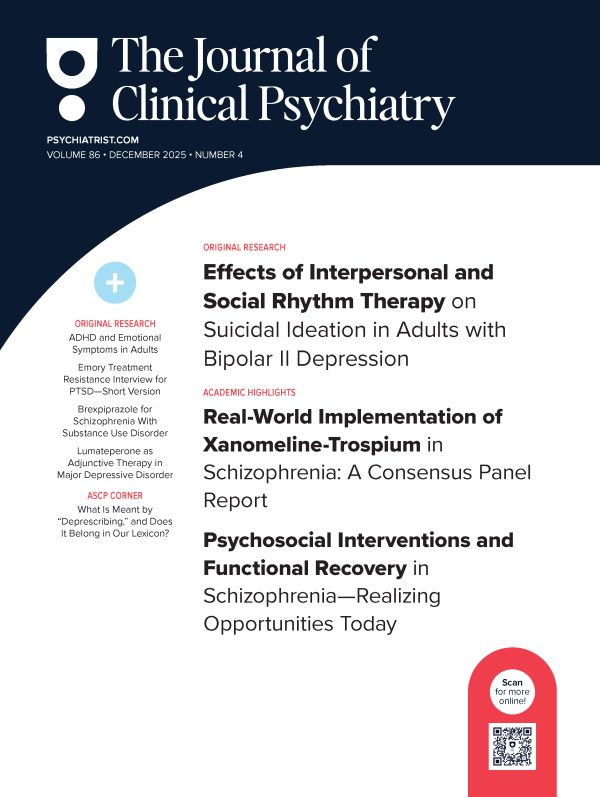Objective: To examine the efficacy and safety of olanzapine at low and moderate doses for the treatment of borderline personality disorder.
Method: In this 12-week randomized double-blind placebo-controlled trial, 451 outpatients aged 18-65 years with DSM-IV borderline personality disorder received olanzapine 2.5 mg/d (n = 150), olanzapine 5-10 mg/d (n = 148), or placebo (n = 153). The trial was conducted from February 2004 through January 2006 at 59 community-based and academic study centers in 9 countries (United States, Italy, Poland, Romania, Turkey, Chile, Peru, Argentina, and Venezuela). The primary efficacy measure was mean change from baseline to last-observation-carried-forward endpoint on the Zanarini Rating Scale for Borderline Personality Disorder (ZAN-BPD) total score. Secondary measures included the Montgomery-Asberg Depression Rating Scale, the Modified Overt Aggression Scale, the Global Assessment of Functioning, the Symptom Checklist-90-Revised, and the Sheehan Disability Scale.
Results: An overall mean baseline ZAN-BPD total score of 17.2 (SD = 4.9) indicated moderate symptom severity. Only treatment with olanzapine 5-10 mg/d was associated with significantly greater mean change from baseline to endpoint in ZAN-BPD total score relative to placebo (−8.5 vs −6.8, respectively; P = .010; effect size = 0.29; 95% CI, 0.06-0.52). Response rates (response indicated by ≥ 50% decrease from baseline in ZAN-BPD total score) were significantly higher for olanzapine 5-10 mg/d (73.6%) versus olanzapine 2.5 mg/d (60.1%; P = .018) and versus placebo (57.8%; P = .006). Time to response was also significantly shorter for patients taking olanzapine 5-10 mg/d than for placebo-treated patients (P = .028). Treatment-emergent adverse events reported significantly more frequently among olanzapine-treated patients included somnolence, fatigue, increased appetite, and weight increase (all P values < .05). Mean weight change from baseline to endpoint was significantly greater for olanzapine-treated than for placebo-treated patients (olanzapine 2.5 mg/d: 2.09 kg; olanzapine 5-10 mg/d: 3.17 kg; placebo: 0.02 kg; P < .001). The overall completion rate for the 12-week double-blind treatment period was 65.2% (ie, 64.7% for olanzapine 2.5 mg/d, 69.6% for olanzapine 5-10 mg/d, and 61.4% for placebo).
Conclusions: Olanzapine 5-10 mg/d showed a clinically modest advantage over placebo in the treatment of overall borderline psychopathology. This advantage in effectiveness should be weighed against the risk of adverse events (particularly weight gain), which were consistent with the known safety profile of olanzapine.
Trial Registration: clinicaltrials.gov Identifier: NCT00088036
J Clin Psychiatry
Submitted: February 18, 2008; accepted May 21, 2010.
Online ahead of print: April 5, 2011 (doi:10.4088/JCP.08m04138yel).
Corresponding author: Mary C. Zanarini, EdD, McLean Hospital, 115 Mill St, Belmont, MA 02478 ([email protected]).
Members Only Content
This full article is available exclusively to Professional tier members. Subscribe now to unlock the HTML version and gain unlimited access to our entire library plus all PDFs. If you’re already a subscriber, please log in below to continue reading.
Please sign in or purchase this PDF for $40.00.
Already a member? Login


